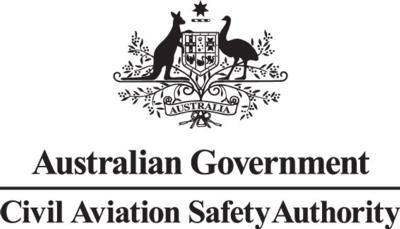Fri, Apr 04, 2014
New Rules Could Save $2 Million (AU) Across The Industry
New regulations covering a large number of flying training organizations in Australia are being simplified, according to that country's Civil Aviation Safety Authority (CASA). The agency says the move follows a review of its Part 141 of the Civil Aviation Safety Regulations.

The simplification of the rules and requirements will cut red tape and reduce costs for about 300 flying training schools across Australia. CASA estimates the changes will lower costs in the flying training industry by nearly $2 million (AU) a year. Optimal safety outcomes for flying training will be maintained by retaining the core elements of the new Part 141.
Part 141 covers flying training for recreational, private and commercial pilot licenses, ratings and endorsements for single pilot aircraft. It does not extend to intensive integrated training for private and commercial licenses, which is contained in Part 142 of the Civil Aviation Safety Regulations. The new licensing suite of regulations, which includes Part 141, will take effect from 1 September 2014. Simplification of the requirements will be made before the regulations come into effect.
Key changes to Part 141 are:
- The requirement for a safety management system will be removed. Recommending safety management systems are implemented for small, simple flying training organizations is more beneficial than mandating them.
- A quality assurance manager will no longer be required and the quality assurance system requirements will be simplified for operators who are limited to simulator training.
- There will no longer be a need to develop an exposition when transitioning to the new rules. An operations manual will achieve the same safety outcomes.
- To help reduce the administrative burden on flying schools, CASA will provide training course material and off-the-shelf operations manual material.
- A policy statement will be developed in relation to entry control processes to ensure they do not go beyond what is legislatively required.
CASA’s Director of Aviation Safety, John McCormick, said the review of flying training regulations was conducted in line with the Federal Government’s direction to look for opportunities to reduce the cost and burden of regulatory compliance on industry.
“I am very pleased the new regulations in Part 141 can be simplified and made less costly while at the same time maintaining high safety outcomes,” McCormick said. “Naturally, safety can never be jeopardized in the pursuit of simpler regulations but with hard work the two outcomes can be achieved. CASA has listened to the views of people in the flying training sector and responded to their concerns with positive action.”
More News
From 2023 (YouTube Version): Legacy of a Titan Robert (Bob) Anderson Hoover was a fighter pilot, test pilot, flight instructor, and air show superstar. More so, Bob Hoover was an i>[...]
Get The Latest in Aviation News NOW on Instagram Are you on Instagram yet? It's been around for a few years, quietly picking up traction mostly thanks to everybody's new obsession >[...]
Aero Linx: B-52H Stratofortress The B-52H Stratofortress is a long-range, heavy bomber that can perform a variety of missions. The bomber is capable of flying at high subsonic spee>[...]
Altimeter Setting The barometric pressure reading used to adjust a pressure altimeter for variations in existing atmospheric pressure or to the standard altimeter setting (29.92).>[...]
"Knowing that we play an active part in bettering people's lives is extremely rewarding. My team and I are very thankful for the opportunity to be here and to help in any way we ca>[...]
 Classic Aero-TV: Remembering Bob Hoover
Classic Aero-TV: Remembering Bob Hoover ANN FAQ: Follow Us On Instagram!
ANN FAQ: Follow Us On Instagram! ANN's Daily Aero-Linx (05.15.24)
ANN's Daily Aero-Linx (05.15.24) ANN's Daily Aero-Term (05.15.24):Altimeter Setting
ANN's Daily Aero-Term (05.15.24):Altimeter Setting Aero-News: Quote of the Day (05.16.24)
Aero-News: Quote of the Day (05.16.24)



